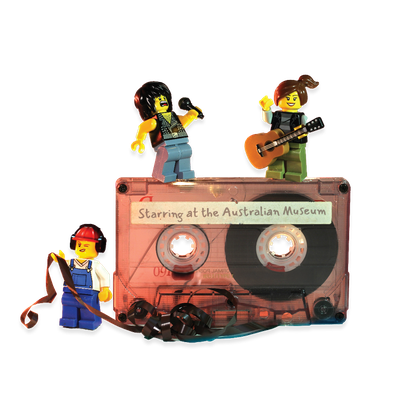Your search returned 2115 results
By Page Type
By Tag
- fish (966)
- blog (696)
- fishes of sydney harbour (401)
- First Nations (299)
- Blog (236)
- AMRI (169)
- archives (164)
- Eureka Prizes (146)
- Aboriginal and Torres Strait Islander (135)
- insect (126)
- Ichthyology (124)
- geoscience (109)
- minerals (102)
- climate change (99)
- podcast (94)
- Fish (91)
- Anthropology (89)
- International collections (80)
- Minerals Gallery (78)
- wildlife of sydney (78)
- Labridae (77)
- frog (74)
- gemstone (70)
- photography (66)
- history (64)
- Mollusca (60)
- gem (59)
- staff (59)
- Birds (56)
- Gems (56)
- Indonesia (56)
- education (56)
- shark (55)
- AMplify (54)
- people (53)
- earth sciences (50)
- exhibition (50)
- past exhibitions (50)
- Gobiidae (48)
- sustainability (46)
- Pomacentridae (45)
- Serranidae (44)
- lifelong learning (42)
- science (42)
- Earth and Environmental Science (41)
- Syngnathidae (41)
- Ancient Egypt (40)
- Bali (40)
- bird (40)
- dangerous australians (40)
-
Torres Strait Islands
https://australian.museum/publications/sharks/torres-straight-island/People have inhabited the Torres Strait Islands for at least 2,500 years. The surrounding sea is rich in coral and marine creatures, which means plenty of food for fishes, which in turn are food for sharks.
-
Aotearoa
https://australian.museum/publications/sharks/aotearoa/Aotearoa New Zealand consists of two islands and around 70 species of sharks are found in their waters.
-
Shark species
https://australian.museum/publications/sharks/shark-species/Learn about different shark species from ancient shark ancestors to the largest and fastest sharks and discover 3D interactive models.
-
Explore
https://australian.museum/publications/explore_summer2024/The Australian Museum's biannual Members' magazine Explore continues a 100-year tradition of publishing behind-the-scenes news and features at Australia’s first museum.
-
Entomology
https://australian.museum/learn/collections/natural-science/entomology/Entomology is the study of insects including beetles, flies, cicadas, moths, earwigs, fleas, bugs, cockroaches, bees, dragonflies and termites.
-
Ichthyology
https://australian.museum/learn/collections/natural-science/ichthyology/Learn about the Australian Museum Ichthyology collection and research of fishes.
-
Malacology
https://australian.museum/learn/collections/natural-science/malacology/Learn about our collection and study of molluscs; including chitons, clams, mussels, snails, nudibranchs (sea slugs), tusk shells, octopus and squid.
-
Mammalogy
https://australian.museum/learn/collections/natural-science/mammalogy/Learn about our collection and study of mammals. Mammals include placental mammals such as rodents, primates and whales; marsupials such as kangaroos and koalas; and monotremes such as the platypus and echidna.
-
Mineralogy
https://australian.museum/learn/collections/natural-science/mineralogy/Learn more about our mineralogy and petrology collections and study of minerals and rocks.
-
Ornithology
https://australian.museum/learn/collections/natural-science/ornithology/Ornithology is the branch of zoology devoted to studying birds. Around 10,000 species of bird inhabit the world, ranging from tiny hummingbirds up to huge ostriches. The Australian Museum's Ornithology Collection contains a wide cross-section of these fascinating animals.
-
Discover more
2025 Australian Geographic Nature Photographer of the Year
Special exhibition
Free entry
Now open -
Discover more
Unfinished Business
Special exhibition
Free entry
Now open -
Discover more
Wansolmoana
Permanent exhibition
Free entry
Open daily -
Find out more
Burra
Permanent kids learning space
Free entry
10am - 4.30pm![]()
-
Discover more
Minerals
Permanent exhibition
Free entry
Open daily![]()




